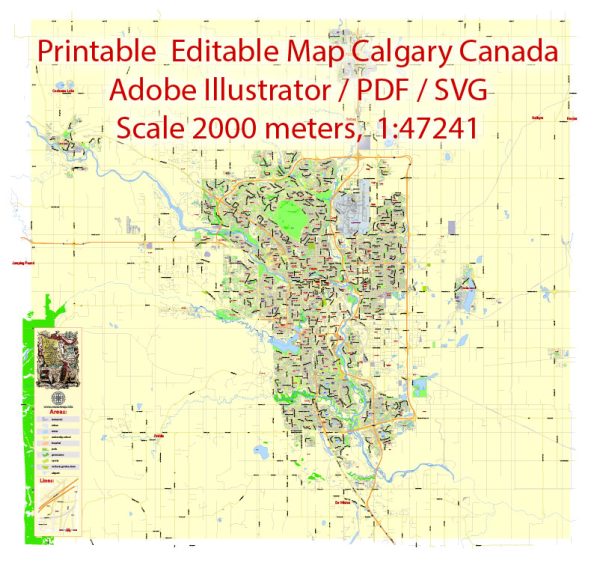Calgary, Canada’s history of urban development is a fascinating journey that has transformed it from a small, frontier outpost into a modern, bustling metropolis. Here is a brief description of the key stages and developments in the city’s history:
- Early Settlement and Fort Calgary: Calgary’s history can be traced back to the mid-19th century when the North-West Mounted Police established Fort Calgary in 1875 at the confluence of the Bow and Elbow Rivers. The fort served as a base for law enforcement in the region and played a vital role in the early development of the area.
- Railway Boom: The arrival of the Canadian Pacific Railway in 1883 was a pivotal moment in Calgary’s history. The railway brought an influx of settlers and commerce, setting the stage for the city’s growth. Calgary quickly evolved into a supply center for the surrounding agricultural and ranching communities.
- The Calgary Stampede: One of the most iconic events in Calgary’s history is the Calgary Stampede, which started in 1912. This annual rodeo and exhibition became a symbol of Calgary’s Western heritage and continues to be a significant cultural and economic event for the city.
- Oil and Gas Industry: In the early 20th century, the discovery of oil in Alberta had a profound impact on Calgary. The city became a hub for the oil and gas industry, with numerous energy companies establishing their headquarters in the city. This led to significant economic growth and increased urban development.
- Expansion and Suburbanization: During the mid-20th century, Calgary experienced suburbanization, driven by a growing population and the availability of affordable land on the city’s outskirts. This resulted in the development of many suburban communities and the expansion of the city’s boundaries.
- Urban Renewal: In the late 20th century, Calgary underwent a period of urban renewal. The city focused on revitalizing its downtown core, with initiatives like the construction of the Calgary Tower (1971) and the Calgary Olympic Plaza (1988 Winter Olympics). These efforts aimed to make the city more attractive for residents and visitors alike.
- Economic Diversity: Calgary’s economy expanded beyond oil and gas, with a growing focus on technology, finance, and creative industries. The city’s economy diversified to mitigate the impact of oil price fluctuations.
- Infrastructure Development: Calgary has seen significant investments in infrastructure, including the construction of the CTrain light rail transit system, a modern airport, and extensive road networks to support its growing population and economic activities.
- The Bow and Brookfield Place: Two iconic skyscrapers, “The Bow” and “Brookfield Place,” are notable additions to Calgary’s skyline. “The Bow” is an architectural marvel and one of Canada’s tallest buildings, while “Brookfield Place” brought modern office space to downtown Calgary.
- Sustainability Initiatives: In recent years, the city has taken steps to address sustainability and climate change issues, with initiatives such as the Green Line LRT expansion and a commitment to reducing greenhouse gas emissions.
Calgary’s urban development history showcases its transformation from a small frontier outpost to a vibrant, diverse, and economically significant city. The city continues to evolve, with a focus on innovation and sustainability in the 21st century.


 Author: Kirill Shrayber, Ph.D.
Author: Kirill Shrayber, Ph.D.